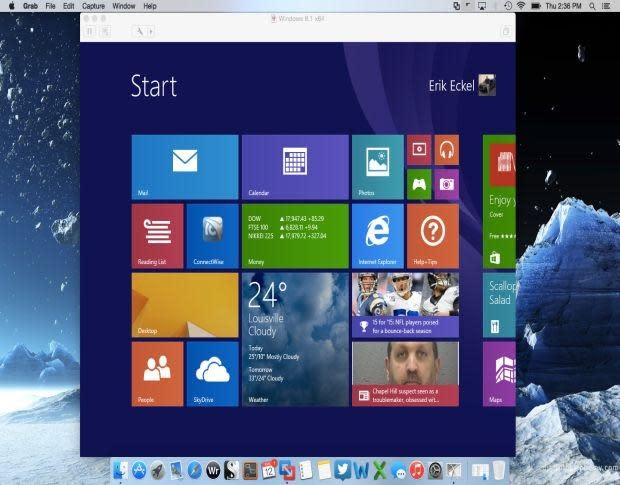Mac vs. Windows incompatibility achieves irrelevance

Pumping diesel fuel into a vehicle requiring unleaded gasoline makes what most would describe as a first-class mess. Fortunately, diesel fuel dispenser nozzles are sized to help prevent accidental insertion within an unleaded fuel tank. Surprisingly, some businesses still believe Macs are as incompatible with Windows systems as diesel fuel is with unleaded.
The popularity of cloud-based computing, in which business professionals largely only need internet access to a web-based application using the Safari, Firefox, or Chrome Web browsers, combined with Microsoft's continued Office productivity suite support for OS X and even iOS, essentially eliminates incompatibilities. In cases where organizations prove dependent upon a Windows-based application -- a scenario increasingly unlikely, thanks to many such application providers offering platform-independent cloud-based computing options -- Mac users can always load VMware Fusion (or Parallels Desktop for Mac) and run Windows within OS X.
The majority of computer users have largely made Microsoft's Office productivity tools the de facto standard. Microsoft Word, Excel, and PowerPoint essentially rule the document, spreadsheet, and presentation worlds. Now that Microsoft supports OS X (and iOS) with its Office 365 licensing subscriptions, and the Windows and Mac versions encounter little trouble when sharing files between platforms, Mac users needn't worry that Windows colleagues will send files they can't read, import, edit, change, and otherwise send back. Office productivity compatibilities have essentially been eliminated.
Even if a Windows user seeking to migrate to using a Mac is dependent upon Microsoft Access, Project, or Publisher, those applications can be obtained from Microsoft and installed and run within a virtual machine. In the past, VMs were a chore to set up and administer. However, virtualization software advancements make creating new VMs a breeze -- plus faster Macs (solid state disks, in particular) and improved efficiencies within OS X dramatically improve performance.
Popular cloud-based storage services, including Box and DropBox, now support the Mac platform, as do automated backup offerings from Carbonite and Mozy. Even Microsoft's OneDrive cloud-managed file storage solution now supports Macs and iOS devices.
Another former challenge, tracking all the independent Apple and Mac programs (obtained from a variety of vendors) that a Windows administrator potentially procured outside established purchasing systems, is really no longer an issue. Windows shops seeking to accommodate Mac users will find that all they need to do is set up a volume purchase program, from which software licenses can be obtained and administered.
The days of application, web browser, document, spreadsheet, and other office productivity tool Mac/Windows incompatibilities have ended. Microsoft Office app support for the OS X and iOS platforms, Office app improvements, cloud computing trends, and software procurement and distribution innovations make it possible for Mac users to live comfortably within a Windows world. Windows dependencies, in fact, are decreasing.
Does Mac and Windows coexist in your organization? Share your experience, including any hurdles that you've had to overcome.

